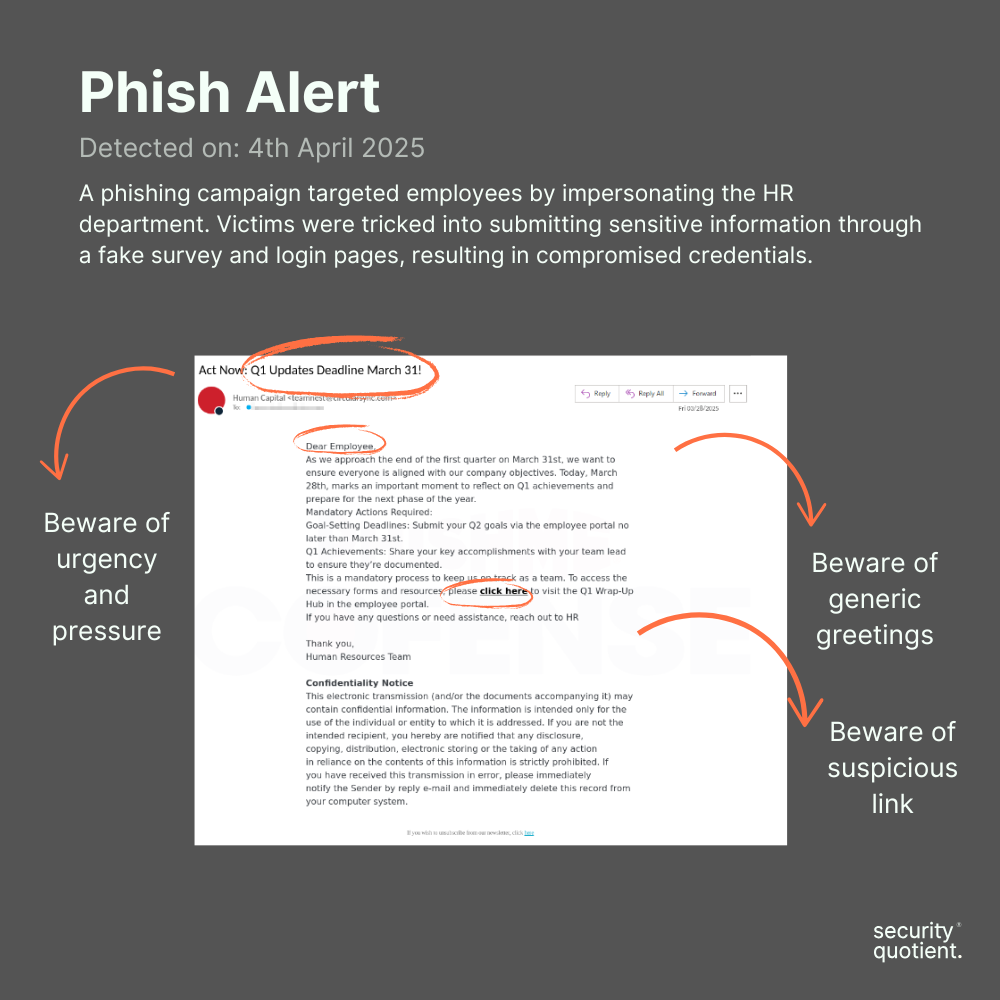Phishing Alert: HR-Themed Phishing Targets Employees for Sensitive Information
May 6th, 2025
Contributor: Aleena Jibin
Key Insight
The incident
The HR-themed phishing attacks involve emails that mimic official communications from a company’s Human Resources. The emails often carry suspicious subject lines and contain urgent calls to action, creating a false sense of authority and immediacy. The goal is to trick employees into revealing sensitive information or clicking on malicious links.
Once the victim clicks the link, they are redirected to a fake survey that asks for sensitive information, such as their name, department, and other personal details. The attackers use these details to gather information through social engineering and tailor future attacks.
After submitting their information, victims are directed to a spoofed Microsoft login page. When the victims enter their credentials, the attackers capture them, gaining unauthorized access to sensitive business accounts.

How to spot a phishing email? - Download
Impact of the incident
This attack highlights the growing sophistication of phishing techniques. By leveraging urgency and pretending to be from the HR department, attackers manipulate employees into acting without verifying the source. Unlike traditional phishing, which exploits technical flaws, this campaign relies on human error, making it harder to detect.
Once attackers capture login credentials, they gain access to sensitive business data, leading to data breaches, financial losses, and account takeovers. Stolen credentials can also be used to impersonate victims and launch additional phishing campaigns or commit identity theft.
Traditional security measures are increasingly inadequate in detecting and preventing such targeted, multi-step phishing attacks. Organizations must prioritize employee education, ensuring that staff are equipped to identify, report, and prevent phishing attempts. Continuous security awareness training is essential to mitigating these evolving threats.
How to stay safe?
- Be cautious of urgent requests: Always be cautious of emails that demand immediate action, especially when they seem related to internal processes or deadlines.
- Verify the source: Before clicking any links or providing sensitive information, verify the sender’s email and contact them through official channels to ensure credibility.
- Verify URLs Carefully: Always double-check that links lead to trusted websites. If in doubt, manually type the web address into your browser rather than clicking on a link. This helps avoid being misled by fake, spoofed pages.
- Educate Employees: Train staff to recognize new phishing tactics and social engineering methods. Keep the training up to date with emerging threats.
Source
Q1 Goals to Gaps in Security: The Rise of HR-Themed Phishing
